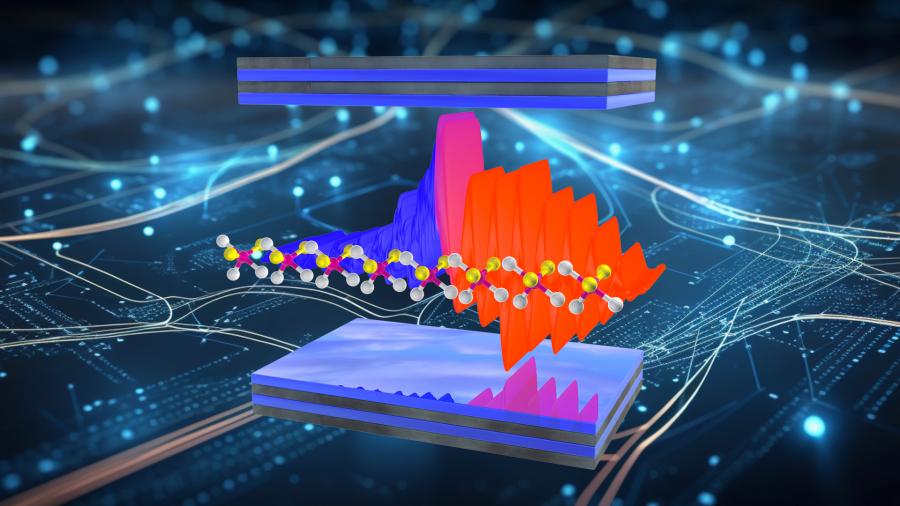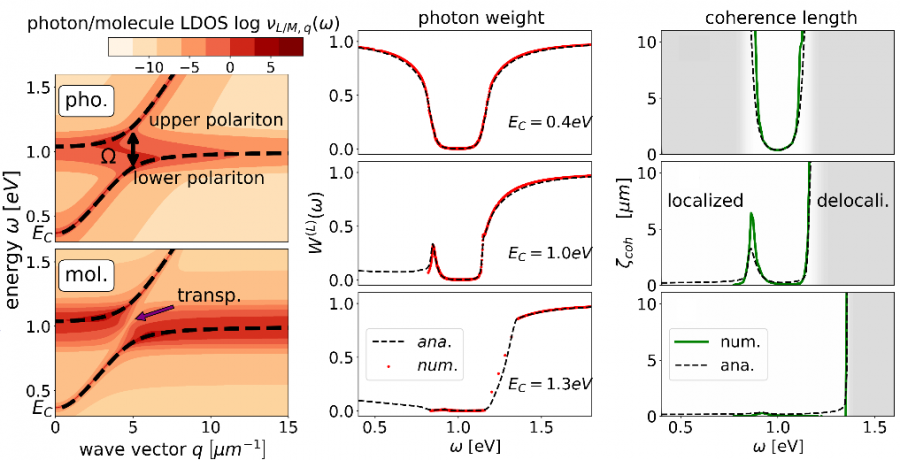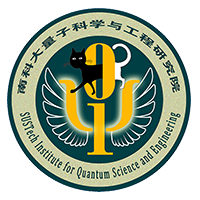Researchers explain why energy can travel much faster in microcavities
In a microcavity, consisting of two parallel mirrors separated at a small distance, light couples very strongly to matter. This gives rise to the formation of so-called polaritons, quasiparticles consisting of light and matter (such as molecules) with intriguing optical properties.
Recent experimental research has shown that these polaritons, which carry with them a certain amount of molecular excitation energy, can travel ultrafast. The energy transport velocity in a microcavity can be even one million times faster than under normal circumstances. Polariton technology thus has great potential to boost the efficiency of photovoltaic devices and photodetectors.
While experiments have shown rapid progress in recent years, polaritons are theoretically only insufficiently understood until now. As typical microcavities contain a huge number of molecules with random physical properties, a theoretical description is very challenging. Most previous theoretical approaches have oversimplified the description of the light field, which gives rise to unphysical predictions, e.g., that polaritons can travel faster than the speed of light.

In their recent article, Associate Researcher Georg Engelhardt from the Shenzhen Institute for Quantum Science and Engineering (SIQSE) at the Southern University of Science and Technology (SUSTech) and Professor Jianshu Cao from the Massachusetts Institute of Technology (MIT) have now taken a crucial step in the theoretical description of polaritons.
Their research work, entitled “Polariton Localization and Dispersion Properties of Disordered Quantum Emitters in Multimode Microcavities”, has been published in Physical Review Letters, one of the most prestigious journals in physics.
Without oversimplifying the light field, the researchers have found an exact solution to the polariton dynamics. This solution explains under which conditions the polaritons can travel very fast and far. It also reveals how the photon contribution of a polariton helps to overcome the localization of energy. Without a microcavity, energy is trapped more at the molecules when increasing the disorder in a system. In contrast, the new theoretical research shows that more disorder can even help to speed up the energy flow. These detailed theoretical findings will thus help to direct the design of new polariton technologies in the future.

Figure 1. (Left) Local density of states of the polaritons in wave-vector representation, from which one can infer its dispersion properties. (Middle) Light contribution of a polariton resolved as a function of energy. (Right) Polariton coherence length as a function of energy, from which one can infer the transport properties.
Associate Researcher Georg Engelhardt is the first author of this paper.
This research work was supported by the Guangdong Provincial Key Laboratory of Quantum Science and Engineering.
Paper link:



